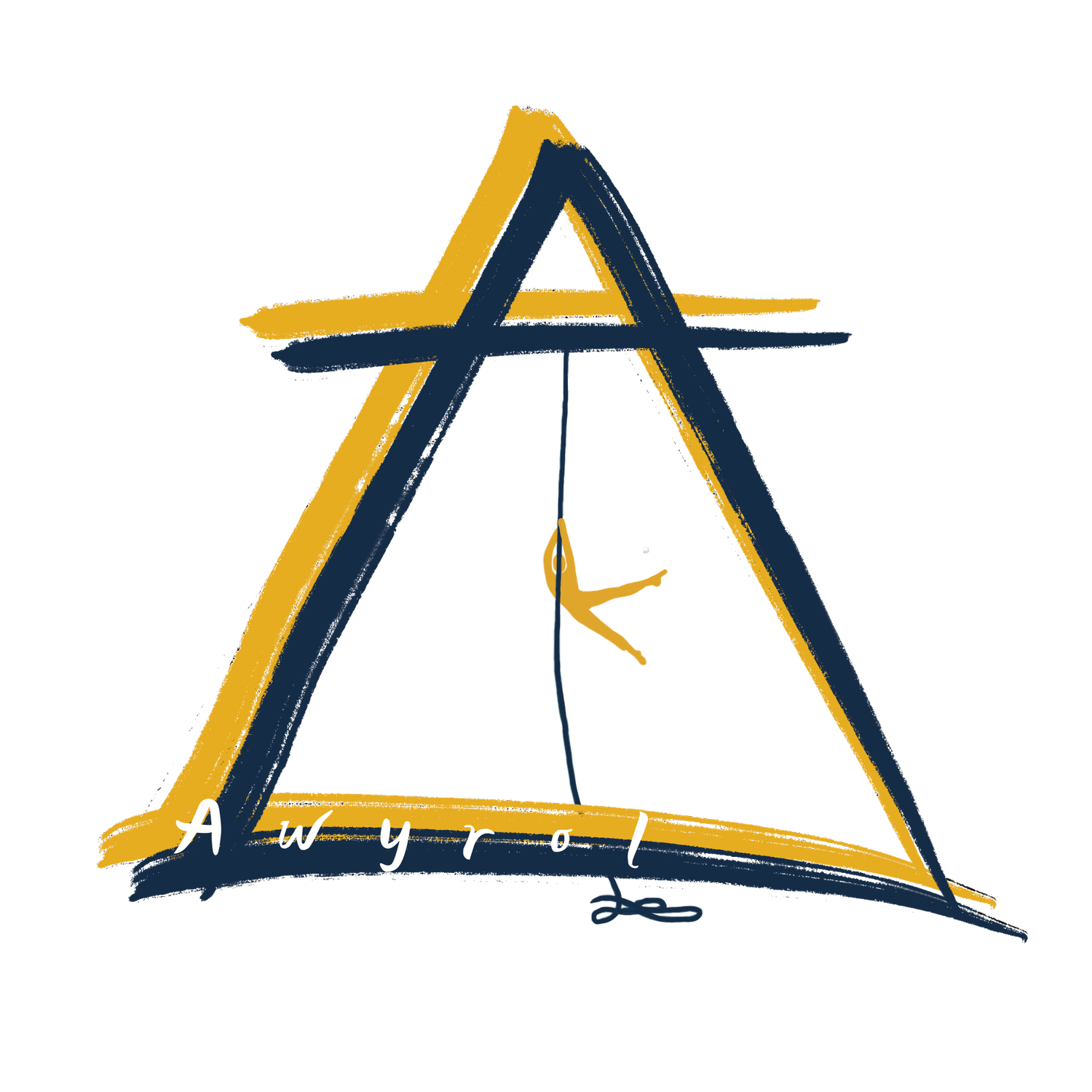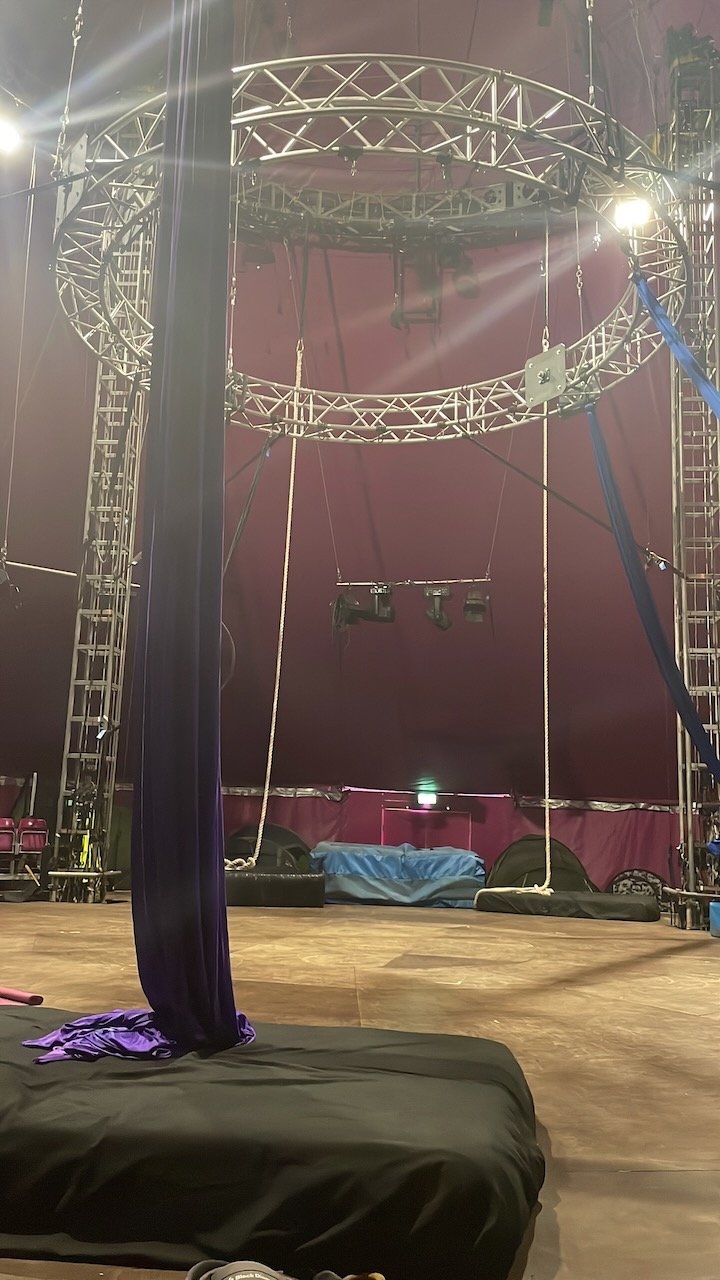Circus Village
On teaching & creating under the big top(s)
If you’re a UK-based circus artist
who’s just spent a few muddy days or weeks on a semi-submerged, pallet-strewn recreation ground next to a dual carriageway alongside the Swansea seafront in South Wales, you’ll need no introduction to the Nofitstate Circus Village. If you’re not (or you are and didn’t get the chance to go this time) then let me attempt to describe this circus utopia.
Do mud, main roads and utopia belong in the same paragraph? In this context, I think so. It may have been raining & cold (croeso i Gymru yn y gwanwyn! Welcome to Wales in the spring!) but it was also a beautiful bringing-together of circus artists, directors, designers, riggers, musicians, students, teachers, enthusiasts from across Wales, Scotland & England into a month-long exploration of ideas & celebration of all things circus.
What is it?
Circus Village is the brainchild of national touring company Nofitstate Circus based in Cardiff, the Welsh capital city. The first Circus Village of this kind took place in 2021 as a means of helping the sector recover and rejuvenate in the wake of Covid lockdowns. A similar model was used this time with applicants being offered places on a rolling programme of 3 day themed residencies. Workshops were delivered by multiple coaches, companies, directors across four beautiful big tops - Swamp Circus, Sam Goodburn’s, Revel Puck Circus and Nofitstate’s very own spaceship - with most participants camping on site in their live-in vehicles or in tents inside the big tops. In the final weeks, the Village will become home to a few selected companies creating new work or rehearsing/reworking existing shows, culminating in a festival showcasing some of the shiniest contemporary circus in the UK.
What did i do?
For the first three days I was there as a teacher, facilitating intermediate/advanced rope workshops for a broad range of participants from the Welsh community focus (recreational, pre-professional or professional aerialists based in Wales) and other coaches from across the UK. It was great to connect with other aerial teachers - who were sometimes also learning alongside some of their more advanced students - in this way and also do some skillsharing. I had some useful discussions with coaches about the varied vocabulary we use for the same positions/wraps and actions; I saw some excellent spotting techniques and learned some new cues. And, as always, learned so much from the varied bodies and folks I got to encounter. Every body I teach has something to teach me about teaching.
I also got to do some workshops on ensemble devising techniques when working with groups, & on inclusive practice with Aerial Mel Stevens, who challenged us to teach in ways that would be inclusive to neurodiverse groups as well as those with visual, hearing and/or mobility impairment (using fewer visual or verbal cues, respectively; setting tasks/goals rather than demonstrating set material in fixed ways).
Carving out time for creativity
I returned later in March for 2 x 3 day residencies as a participant. The first was a focus on experimental R&D with French company Cirque Inextremiste. The company introduced their approach to risk and realness as a means to create audience empathy and connection: we deliberately tripped ourselves up, climbed ladders supported only by one or two people before diving backwards into the group; and then we made work to share, at every stage trying to find realness in the jeopardy of what we were doing. (Whilst also not injuring ourselves. A challenge. I got rope burns and bruises.)
I loved this. Because I have a background in performance art where following a single quixotic task to completion can be the premise of a whole show.
It’s hard to describe the absurd and bizarre performance we eventually did, but suffice to say I found myself being belayed up a rope whilst sitting on a chair into a group of aerialists suspended on ropes above me.
Finally for the second residency I was in a group of circus artists working with directors Orit Azaz and Mish Weaver to develop and explore our own ideas for new work. We acted as bodies/participants to test out others’ devising tasks and ideas; we offered feedback on work in progress; we met and connected with other circus artists and found common areas of choreographic interest with folks from across different circus disciplines. Then I got ill with a stomach bug and had to come home early. So it ended, literally, in tears.
What did I learn?
That questions can be more productive than answers
That skilfully skating the edge of the balance between safety & risk in circus (or life) is powerfully engaging in performance
That, in fact, a lot of professional circus folks are nursing injuries because it’s the nature of the work we do
That it’s so important to carve out time for creative practice that has no pressure to produce an end product.
That being rolled up the rope in a chair is surprisingly painful.

